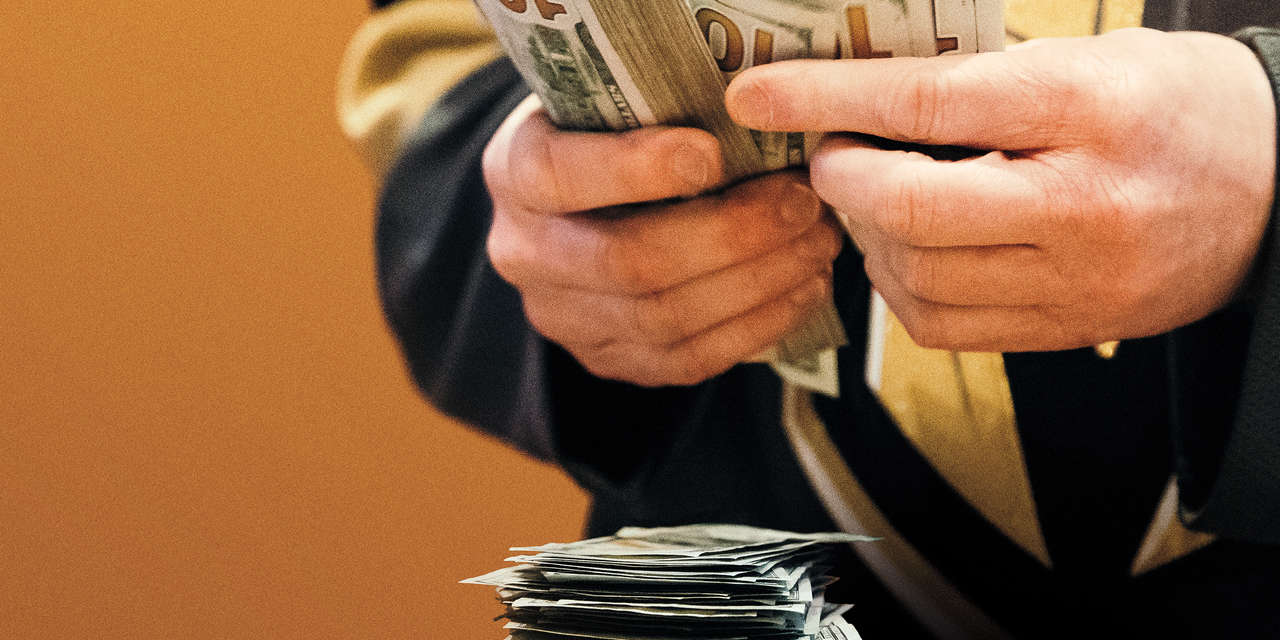Eel guts, salmon blood: Maine companies look to make the most of fish waste
Converting waste from salmon, eel and other marine species into consumer and biomedical products has opened a new and lucrative path for Maine's seafood industry.
Liam Fisher has long been fascinated by the idea of transforming what other people see as garbage into something delicious.
“Being wasteful just kind of makes my skin crawl,” he said.
So when Fisher, of Thomaston, saw a video of the process of butterflying eels at American Unagi, a Waldoboro-based aquaculture company, he didn’t just see the final fillets, he saw what had disappeared: the rest of the eels, including the guts.
And so he started the Maine Garum Co.
Fisher is developing a new recipe for an ancient umami-rich fish sauce known as garum that he hopes to launch on the market sometime next year. The secret (and only) ingredient? Those discarded eel parts.
His is one of a growing number of Maine companies taking advantage of, and trying to reduce, the tremendous amount of waste generated by the seafood industry.
A recent report from the Seafood Economic Accelerator for Maine, a statewide initiative to bolster economic growth and improve resiliency for the seafood sector, estimates that Maine’s seafood industry annually generates about 57 million pounds of waste – about 25% of its total seafood production.
This waste, known as seafood residuals, can be used in myriad ways across numerous industries, and experts believe it has serious economic potential.
Luke’s Lobster, for example, uses lobster shells as plant fertilizer. It also supplies Marin Skincare, which makes moisturizers from lobster glycoproteins.
Coast of Maine Organic Products makes
compost with lobster, crab, salmon and seaweed residuals.
Bigelow Laboratory for Ocean Sciences is testing whether seaweed leftovers can be used to
reduce carbon emissions and allow seaweed harvesters to enter the carbon sequestration market. The laboratory is also exploring whether seaweed residuals can be used as
cow feed, causing cows to burp less and thus reduce their methane emissions and whether the seaweed diet would have an impact on the quality of the manure used for fertilizer.
AN OCEAN OF OPPORTUNITY
SEA Maine’s report breaks potential uses into three categories: highest and best use, medium use and low use.
Medium- to high-value opportunities can provide revenue streams for companies, while low ones typically just avoid waste removal costs through on-site use.
Medium-value opportunities include
composting, fertilizer, fishing bait and animal feed. Higher-value uses could include pet food, health care research materials, bioplastics and “novel” food ingredients like Fisher’s sauce.
Maine companies could see a 7% to 20% return on investment for residuals, depending on how they’re used, according to the report. And that’s just for companies disposing of waste, not those using it to create new products.
The report breaks down residuals by species and the percentages swing wildly. Mussels and oysters, for example, which are sold as whole products, generate little waste – around 1% and 6% – for producers (though plenty for consumers or restaurants). In some cases, the majority of a product is wasted. According to the report, about 60% of harvested halibut and 50% of most other groundfish gets thrown out.
These numbers are thought to be conservative. Information is not available for all species, so by-catch totals were not included in the report. Scallops are reported as meat weight, so no waste is reported – despite the fact that about 65% of their weight is shell, which largely is thrown out at sea
. Salmon data is largely confidential, so salmon estimates were based on export data to Canada, where the fish are processed. A few proposed land-based salmon farms would have processing capacity and so could drastically change the data.
It’s not just a Maine problem.
A 2015 analysis by Johns Hopkins Center for a Livable Future found that 40% to 47% of the
U.S. seafood supply may be wasted, while the United Nations estimates that
35% of all seafood harvested globally is later lost or wasted.
“We aren’t very good with seafood as a society. We also aren’t very good about taking advantage of the opportunities that come around seafood,” said Ben Martens, executive director of the Maine Coast Fishermen’s Association.
A great deal of what would otherwise be wasted can be used as lobster bait, but while that’s a value-added product, it’s not always valuable, he said.
The industry can and should be looking at other ways to add more value to the seafood chain, he said, and he sees a lot of potential in groundfish, like haddock, cod, halibut, hake and pollock.
“There are a lot of fishermen right now that are interested in diversifying into groundfish,” he said. “If we’re going to have more people participating in this smaller fishery, what can we do to increase the value?”
With so much waste and so much opportunity to use it not only to offset costs but also make money, why don’t all seafood operators dabble in residuals? The SEA Maine report says it comes down to resources. Many companies don’t have enough volume to make a residuals-based revenue stream worth it. Many lack the capital needed for the processing. Profitable uses for some of the waste may not be immediately obvious, and time and expertise are needed to test them.
More sources of funding and education are needed, said Chris Davis, steering committee member of SEA Maine and executive director of the Maine Aquaculture Innovation Center. The report will help “get the ball rolling,” he said, and he sees tremendous potential.
“(Fifty-seven) million pounds of material that is going to the waste stream … we can do better than that,” he said, adding that tapping into it will create new products, processes and jobs.
NO WASTE, BETTER TASTE
Fisher, of the Maine Garum Co., already had a relationship with American Unagi founder Sara Rademaker and processing manager Charlie Walsh, so teaming up was natural. American Unagi, the country’s
first large-scale eel farming operation, provides his raw material.
It’s a win-win. Fisher gets the eel guts, and American Unagi gets to cut its waste.
The two companies’ missions closely align, Fisher said.
“Both of us looked at an existing resource and thought, ‘Why the hell aren’t we doing anything with this?’” he said.
Fisher is now also working at American Unagi on its processing end and simultaneously taking what he needs for his sauce – the eel heads, tails and viscera – on the side.
The ingredients are simple. Just eel bits and salt, but Fisher said the flavor is rich and complex. He hopes to launch in three or four months.
When he does, his garum will be one of the only commercially available fish sauces made in the U.S. and one of the only sauces anywhere made with discarded parts.
“Pretty much any fish sauce I’m aware of on the market utilizes whole fish,” he said.
But that could change.
“The resources to make a really good one are going in dumpsters every day,” he said.
Fisher believes more companies will start to see the potential in the waste – both for sustainability and profit.
“I think aquaculture and fish processing is
going to continue to grow in Maine and that’s going to mean a lot of garbage and a lot of opportunity,” he said.
SCIENTIFIC SALMON BLOOD
In 2021, the global production of salmon was 2.7 million metric tons. That total included roughly 27 million liters of salmon blood, the vast majority thrown out.
Cem Giray doesn’t think it should have to go to waste.
Giray launched his biotech company Salmonics in 2020.
“The whole initiator was ‘Hey, there’s all this salmon blood waste, why can’t we do something with it? What kind of things can be obtained with salmon blood and how can that be utilized?'” Giray said.
Salmonics aims to commercialize the biotech products developed over the past 20 years by research and development company Sea Run Holdings Inc., which Salmonics has acquired, and to develop and market new reagents and products, such as fibronectin and serum, from blood harvested from farmed salmon. The proteins and reagents from the blood, he said, can be used in regenerative medicine, cell proliferation, pain treatment and other research applications.
Animal blood, especially from pigs and cows, is a common ingredient in the biomedical sector, Giray said, but some studies have shown that salmon blood is just as effective, without the same risk for mammalian pathogens of viruses.
Typically blood is removed from fish for the same reason it is removed from cows and chickens, to prevent an off taste in meat and keep it fresh longer.
During the traditional harvest process, salmon are stunned and euthanized, have their gills cut and are placed in an ice bath, where they bleed out before they are gutted and filleted. Left behind is a vat of bloody water that needs to be disinfected and hauled off to a wastewater treatment site.
Salmonics, though, extracts the blood from the fish, often in an onsite lab or it can be done by the processors, with the blood sent to the Brunswick facility. After the blood is drained, the fish end up back on the production line with the rest of the fish.
It takes about 10 to 20 salmon to provide a liter of blood, and Giray estimated that the current salmon production in Maine would equal about 200,000 liters. That’s a lot of waste.
Giray estimated that through its process, Salmonics is able to remove 50 to 150 milliliters of blood per salmon – more than is drained by just letting the fish bleed out.
The company is still in the startup phase, with a team of about five working out of Brunswick Landing’s TechPlace business accelerator. So far they’re dealing with relatively small numbers, in the range of thousands of liters per year, Giray said.
‘IT’S THE RIGHT THING TO DO’
Between Bristol Seafood’s two processing facilities on Portland Fish Pier, nothing is wasted.
The 30-year-old company has been marine-waste-free for two years, according to CEO Peter Handy.
“There’s nothing that isn’t being passed along for somebody to use,” he said.
After haddock and cod are processed on the fillet line, for example, the remnants are passed through another round of processing. The last bits of meat are separated from the bone and ground up to be used in pet food. The bones can be used in agriculture – a natural fertilizer, fish bone meal is rich in phosphorus, calcium and nitrogen. The leftover skins are also highly valued. Fish scales contain guanine, which is used as the shimmer in many cosmetic products, such as lipstick, eyeshadow and nail polish.
“None of the fish goes in the garbage and those companies don’t have to tap into other resources,” Handy said.
The residuals have become an additional revenue source for the company, but the additional processing and contacts require an investment of time and money that may be beyond many smaller operations.
For companies that can manage it, Handy said the decision to reduce and invest in waste is a no-brainer.
“It’s the right thing to do and it makes good business,” he said. “I think it’s incumbent on all of us who want to focus on environmental sustainability to make sure that in the period of time we’re entrusted with a resource, to fully utilize that resource and not leave anything of value behind.”


